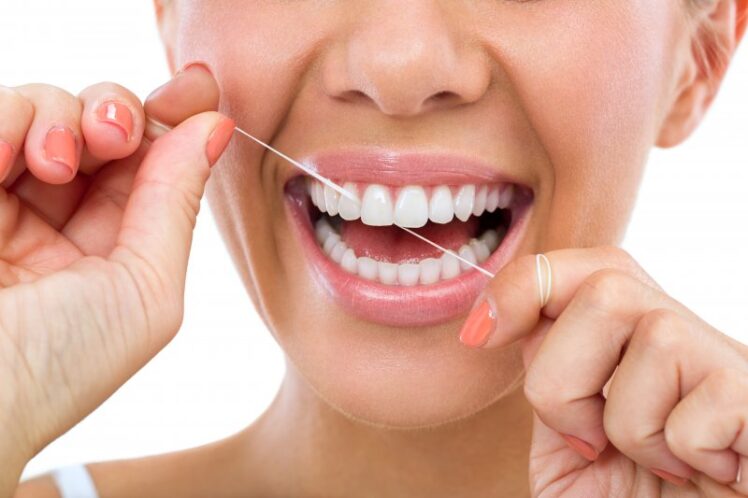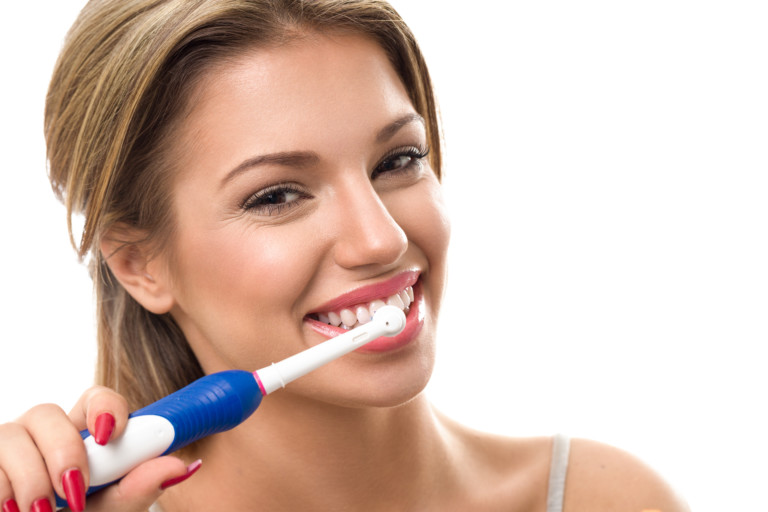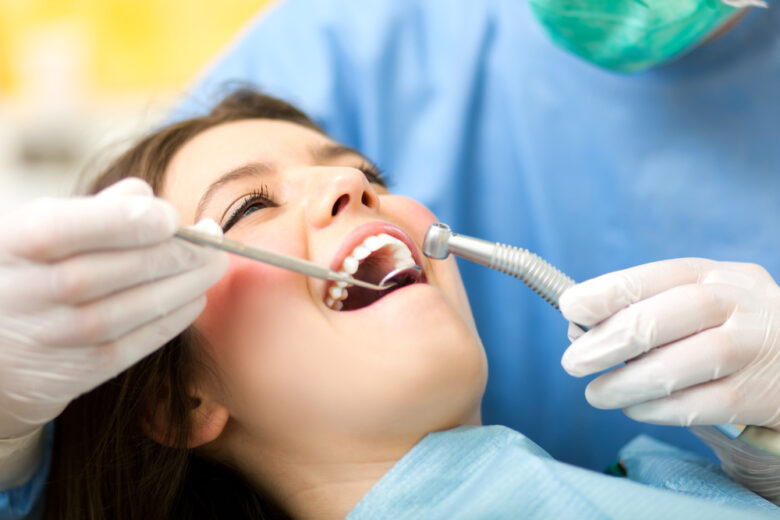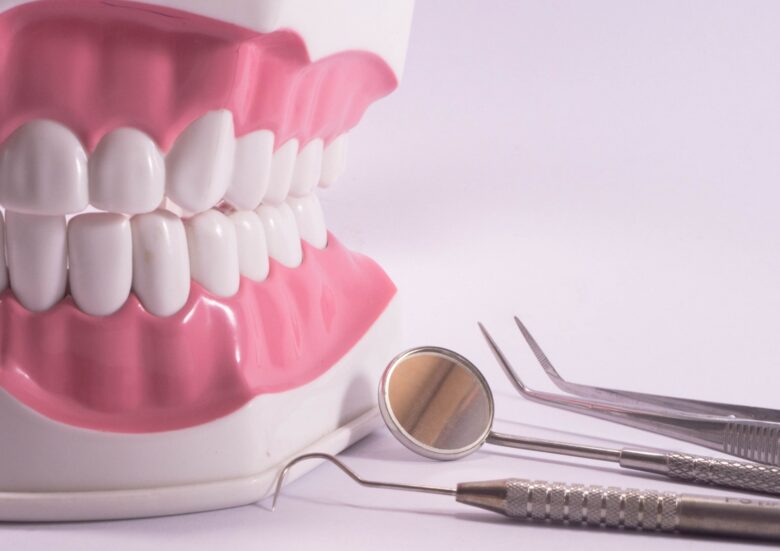One of the first things people notice about others is their pearly whites, but if your teeth look more yellow than white these days, it may be time to take some action. There are a number of factors that contribute to a less-than-gleaming smile, and taking corrective measures often means going beyond the panic-flossing one does before a visit to the dentist.
By following these tips, you no longer have to fear leaving the wrong impression and can feel confident that your teeth are as sparkling as possible.

By Corina Monroe, RDH
Contents
1. Brush every day, twice a day
People should brush their teeth at least twice a day. Many brush first thing in the morning, and then right before bed. Brushing twice a day is the bedrock of strong oral hygiene.
There is a popular debate among people about whether one should brush before or after breakfast in the morning. According to experts, it’s better for your enamel if you brush first thing in the morning before breakfast.
It also matters how long you brush. Swishing a toothbrush around in your mouth for 15 seconds will do very little to rid your teeth of stubborn bacteria and leftover food. The American Dental Association suggests people brush for two minutes for the best results.
2. Yes, you still have to floss
Flossing is the bane of some folks’ existence. It’s tedious, easy to forget, and not always comfortable. Many of us can be relied upon to do the best flossing jobs of our lives the day of our dentist appointments, but then not until the next one rolls around.
Flossing, however, is just as important as brushing for healthy teeth and gums. Just brushing alone cannot get into all the nooks and crannies of your mouth where food likes to hide. Floss or even interdental brushes should be used once a day to reach those places your toothbrush cannot reach.

Source: zumbrofamilydental.com
3. Use an electric toothbrush
The simple reason why dentists use electric toothbrushes is because they work! There is no way the human hand can mimic the oscillating power of an electric toothbrush.
In addition, many electric toothbrushes have features such as built-in timers that allow one to brush as long as they should be brushing. Still, it’s important to remember that just because one uses an electric toothbrush doesn’t mean they can forget about regular brushing and flossing.
4. Choose the right toothpaste
There is a bevy of options available for toothpaste — some are for sensitive teeth, some have whitening power, and others are flavored so that your kids won’t outright refuse to brush. When choosing a toothpaste, look for one that contains fluoride. Fluoride is a mineral found naturally in some foods and water, and toothpastes containing fluoride help support strong teeth and prevent tooth decay.

Source: exceptionalsmiles.dental
5. Watch your diet
It’s a well-known fact that certain foods will stain your teeth, including coffee, sports drinks, certain berries, and dark sodas. But did you know that diet can also lead to decay, gum disease, and tooth loss?
Foods with a lot of sugars, starches, and carbohydrates encourage tooth decay, leading to a less-than-sparkling appearance on one’s teeth. This is not to say you can never have coffee or cake again, but rather in moderation. Take time to bolster your diet with nutrient-rich foods that promote healthy teeth, such as dairy products, fiber-rich leafy greens, and fish.
6. Bring in the mouthwash
In between brushings, an alcohol-free mouthwash can be a great way to fight off bad breath, teeth staining, and bad oral bacteria. It’s important to aim for an alcohol-free mouthwash, as alcohol can lead to dry mouth, which further exacerbates the issues we mentioned, such as bad bacteria growth. Mouthwash can become a part of your morning or evening routine, or even both!

Source: freepik.com
7. No smoking
It goes without saying that smoking isn’t the best choice for health and wellness, but it can also really do a number on one’s teeth. Smoking leads to bad breath, discoloration, gum disease, tooth loss, and can even cause mouth cancer. If one regularly smokes, it can be difficult — if not impossible — to get ahead of all the bad effects of smoking just by brushing and flossing. Quitting is the only way to ensure that one’s smoking habit isn’t destroying their teeth.
8. Consider cosmetic dentistry or a visit to an orthodontist
There are some teeth issues that are best left to the professionals. One may have gleaming white teeth, but their enamel is weak, their teeth are chipped or crooked, or their gums are receding from brushing too aggressively.
Whatever the issue may be, a visit to a cosmetic dentist or orthodontist can help give one hope for a better smile. Braces can straighten teeth, sometimes within a year or so, depending on the severity of the condition. Cosmetic dentists can also do whitening treatments, bridges, and veneers.

Source: pasadenahealthcenter.com
9. Drink water often
Water is a building block for good oral health that works along with your toothbrush and floss to flush particles and food bits from your mouth. In addition, a dry mouth is a magnet for dental issues.
Bad bacteria can grow and negatively affect your teeth and gums, leading to decay, tooth loss, bad breath, and a less-than-appealing appearance. Dentists and doctors suggest you shoot for 8 to 10 glasses of water a day for good health all around.
10. Visit your dentist
Regular dental visits are key to maintaining the best smile possible. Some dentists take the standard recommendation of every six months as gospel truth, while others feel once a year is more reasonable.
Whatever the recommendation from one’s dentist, regular visits help keep one’s mouth healthy. The CDC shows that roughly 64% of Americans have visited a dentist in the last year, though that number is far higher for people under the age of 18 — 86.9%.

Source: canva.com
Having a gleaming white smile goes far beyond whitening toothpaste. In truth, teeth can be a mirror of one’s overall health. By paying heed to dentist recommendations, maintaining a healthy diet, drinking water, and regularly paying a visit to your dentist, you can have a smile you will be proud to flash.
